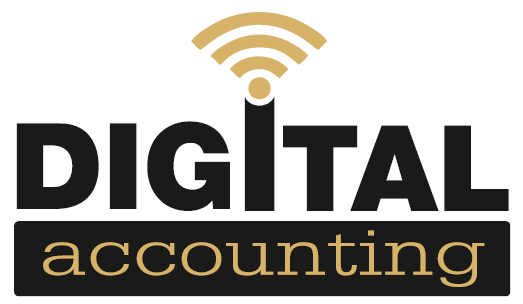Making Tax Digital (MTD) is a major change in the way individuals and businesses report their income to HMRC. From April 2026, MTD for Income Tax will begin rolling out in phases, starting with higher earners and expanding in the years ahead.
This guide has been prepared by the Digital Accounting team in Bicester to help you understand what’s changing, when it’s happening, and what you need to do to stay compliant. You’ll learn:
- who MTD for Income Tax applies to
- the key deadlines and reporting requirements
- what digital records are needed and how to submit them
- how MTD-compatible software works
- how Digital Accounting can support you every step of the way
Whether you’re a sole trader, landlord, or small business owner, this guide will give you the clarity and confidence to prepare for MTD.
What is Making Tax Digital (MTD)?
Making Tax Digital (MTD) is a government initiative designed to modernise the UK tax system by moving it fully online. The aim is to make tax reporting more accurate, efficient, and easier for individuals and businesses. Instead of completing one annual tax return, MTD requires taxpayers to keep digital records and send updates to HMRC throughout the year using approved software.
MTD began with VAT-registered businesses in 2019 and is now being extended to Income Tax Self-Assessment (ITSA). This means that self-employed individuals and landlords who meet the income thresholds will need to switch to digital recordkeeping and submit quarterly income and expense reports directly to HMRC.
Who does MTD for Income Tax apply to?
MTD for Income Tax (MTD for IT) applies to sole traders and landlords with a total gross income above a certain threshold. This includes anyone who earns income from self-employment, property rental, or both.
The rollout is happening in phases:
- From April 2026, it applies to those with annual gross income over £50,000.
- From April 2027, it will extend to those earning over £30,000.
- A further phase is planned for April 2028, bringing in those earning over £20,000 (subject to government review).
If your combined income from self-employment and property exceeds the relevant threshold, you’ll need to comply with MTD for IT by the applicable date. Other sources of income, such as dividends, pensions, or employment income, do not count toward the MTD threshold.
Who is NOT affected by MTD for Income Tax?
If you don’t have income from self-employment or property, you are not affected by MTD for IT. You will continue managing your tax affairs through the traditional Self-Assessment process as you currently do.
Members of partnerships and LLPs are also currently outside the scope of MTD for IT in respect of their partnership income. However, if they receive other qualifying income such as self-employment or rental income outside the partnership, and it exceeds the MTD threshold, they may still need to comply.
MTD for Income Tax: Key dates and deadlines
Making Tax Digital for Income Tax (MTD for IT) is being introduced gradually to give individuals time to prepare. Below are the confirmed and proposed rollout dates, based on your total gross income from self-employment and/or property:
April 2026- £50,000 threshold
If your total income from self-employment or property is over £50,000, you must comply with MTD for IT from 6 April 2026. You’ll need to
- keep digital records using MTD-compatible software
- submit quarterly updates to HMRC
- file a final declaration by 31 January after the tax year ends
April 2027- £30,000 threshold
From April 2027, the rules extend to sole traders and landlords with income over £30,000. The same requirements apply- digital recordkeeping, quarterly reporting and an annual final submission.
April 2028- proposed £20,000 threshold
The government has indicated that from April 2028, MTD for IT could extend to those with income over £20,000, but this is still under consultation and not yet confirmed.
Quarterly reporting deadlines
Under Making Tax Digital for Income Tax (MTD for IT), you’ll need to report your income to HMRC more frequently than under the traditional Self-Assessment system. Rather than submitting one tax return each year, you’ll send four quarterly updates, followed by a final declaration at the end of the tax year.
Each reporting period ends five days after the end of each calendar quarter. Here are the key periods and deadlines:
Tax period: 6 July – 5 October
Submission deadline: 7 November
Tax period: 6 October – 5 January
Tax period: 6 January – 5 April
After your fourth quarterly update, you’ll need to submit a final declaration, like your current Self- Assessment by 31 January following the end of the tax year.
How to get ready for MTD for Income Tax
If you fall within the scope of MTD for Income Tax (MTD for IT), you’ll need to make a few key changes to the way you manage and report your income. The good news is that with the right tools and support, the process can be simple and even beneficial for your business.
Keep digital records
You must keep digital records of all your income and expenses related to self-employment and/or property. This means storing the information electronically using MTD-compatible software (spreadsheets alone won’t be enough unless they are linked to bridging software approved by HMRC).
Use MTD-compatible software
You’ll need software that is recognised by HMRC to meet MTD requirements. This software will help you:
- record your business transactions
- organise income and expenses
- prepare and send your quarterly updates to HMRC
- submit your final declaration at year-end
If you’re unsure which software is right for your business, the next section will guide you through how to choose the right tools
Submit quarterly updates
Every quarter, you’ll need to send a summary of your income and expenses to HMRC via your software. These updates don’t replace your normal bookkeeping, but they do help HMRC build a real-time picture of your income throughout the year.
Submit a final declaration
At the end of the tax year, you’ll need to submit a final declaration (sometimes called an “End of Period Statement”), which brings together all your income, including from non-MTD sources, to finalise your tax position. This must be filed by 31 January following the end of the tax year, just like the current Self- Assessment deadline.
Stay compliant and organised
To stay compliant with MTD for Income Tax, it’s essential to submit your quarterly updates and final declaration on time and ensure your digital records are accurate and up to date throughout the year. While the process may seem overwhelming at first, working with a knowledgeable accountant can make all the difference.
MTD-compatible software: Choosing the right tools
To comply with MTD for Income Tax, you’ll need to use HMRC-recognised software that keeps digital records and submits updates directly to HMRC. But choosing the right software isn’t just about compliance- it’s about finding a solution that fits the way your business works.
Good software should:
- Track your income and expenses automatically
- Highlight missing information or potential errors
- Keep you organised and informed about your tax position
- Give you a real-time view of what you might owe
If you’re a business that relies on additional tools such as CRM platforms, online booking systems, ecommerce software, or rental platforms like Airbnb, it’s important to choose accounting software that integrates with these systems. This ensures that your data flows automatically between platforms, reducing the need for manual entry and saving you valuable time.
While it is possible to change your accounting software later, the process can be time-consuming and disruptive to your business. That’s why it’s worth thinking about the future of your business now and choosing software that can grow with you- whether you’re planning to scale up, add new revenue streams, or take on a team.
At Digital Accounting, we help small businesses, landlords, and sole traders choose software that not only meets MTD requirements, but also supports the way they operate day-to-day. We work with a range of trusted, cloud-based tools and can guide you through setup, integration, and ongoing submissions so you can focus on running your business with confidence.
Exemptions from MTD for Income Tax
Not everyone who submits a Self-Assessment tax return will need to follow the rules under Making Tax Digital (MTD for IT). There are several exemptions in place based on income level and personal circumstances.
Income-based exemptions
If your gross income from self-employment and/or property is below £30,000, you will not be required to comply with MTD for IT until at least April 2027. The government plans to extend MTD further to those earning over £20,000 from April 2028, but this is still under review.
Anyone earning less than £20,000 in total qualifying income (self-employment and property combined) is currently outside the scope of MTD. These individuals will continue to file their Self-Assessment tax returns as usual.
Other exemptions
You may also be exempt from MTD for IT if you fall into one of the following categories:
- It’s not practical for you to use digital tools due to age, disability, or where you live (for example, lack of internet access)
- You object to using technology on religious grounds
In these cases, you can apply to HMRC for an exemption on a case-by-case basis.
Need help or more information?
If you’re unsure how MTD for Income Tax affects you or need support getting started, our expert team at Digital Accounting is here to help. We specialise in supporting small businesses and landlords through every stage of MTD. From choosing the right software to managing your digital records and submitting returns, we take care of the details so you can focus on running your business. With our expert guidance, you can meet your MTD obligations confidently and avoid the risk of errors or penalties.



